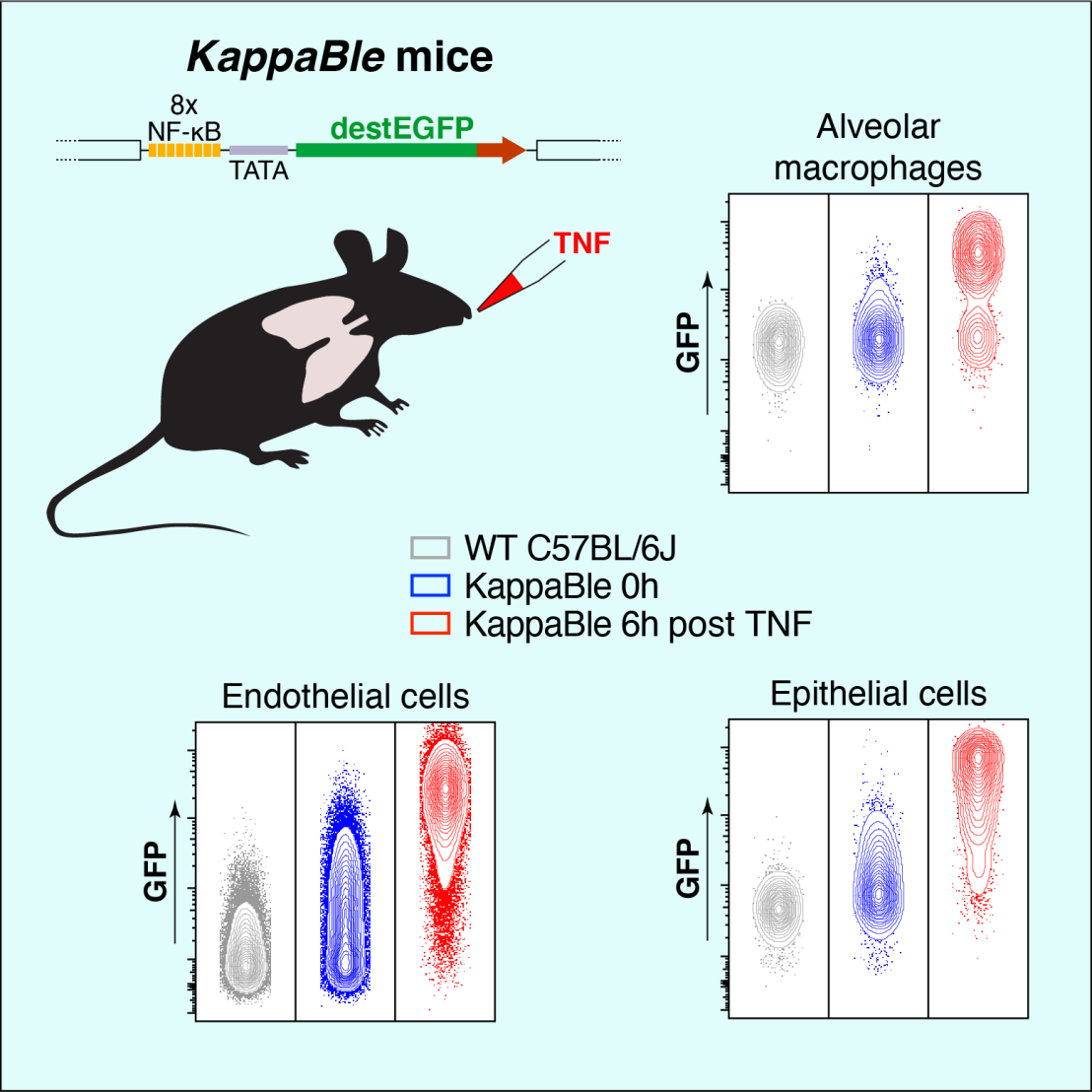KappaBle mice: illuminating NF-kB
A recent "Mucosal Immunology" paper by the Kopf group (IMHS) describes the generation of KappaBle fluorescent reporter animals that allow sensitive, low background, high-throughput detection of the activity of transcription factor NF-kB in all cell types.

The mammalian genome encodes tens of thousands of genes, whose expression across different cell types, developmental stages and activation states is tightly controlled by transcriptional regulators. NF-kB is a key transcription factor that drives the expression of a wide variety of genes that play critical roles during embryonal development and inflammatory responses. Defects in NF-kB activation blunt immune responses while its deregulated activation is associated with the onset of inflammatory pathologies.
Fluorescent reporter systems to study the dynamics of NF-kB activation in different cellular processes are desirable, but existing systems suffer from high background and low sensitivity.
Researchers at IMHS generated a new line of fluorescent reporter mice in which they tackle these issues by using a variant of green fluorescent protein (GFP) with a short half-life and by increasing the sensitivity of the reporter cassette. The new NF-kB reporter mice, dubbed KappaBle by the authors, allow unbiased, high-throughput analysis of NF-kB transcriptional activity at single cell level across a wide variety of cell types.
Link to the paper in external page "Mucosal Immunology"